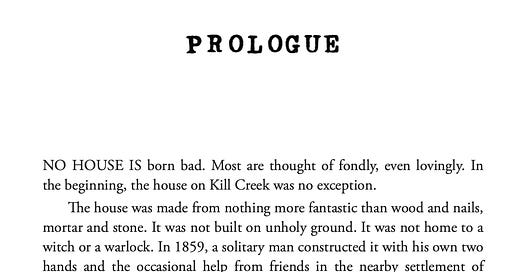So, how do you write good prose? If we were analogizing novels to radio, prose is like fidelity. It’s the ability to take what is coded on a recording, or in this case in your head, and broadcast it—clearly—into the mind of a reader. That fidelity, so to speak, is comprised not of amplitude and frequency but of diction (word choice) and syntax (sentence structure), two topics we have already discussed in our section on voice. At the risk of being highly reductionist—and again, repeating ourselves—it’s about the words you choose and how you put them together. We can layer on a lot more details as we discuss prose, but let’s just start out with these two basic building blocks.
When we read prose, we like to slot it in three categories. The first level of decent prose is “clear and readable.” If you had a really great story to tell, “clear and readable” prose wouldn’t actively impede your broadcasting of the story into the mind of a reader. It is free of grammatical errors and conveys the basic details of the scenes, if falling short of real immersiveness. Dan Brown is an author who occupies this category. His focus is not the beauty or immersiveness of his writing, but the fascinating story he has to tell. And he does it to great effect. Many apprentice writers, however, do not. If we look at a pile of unfiltered submissions, probably 75% of the submissions fail to meet this basic standard of competence.
One level up from this is what we think of as “nuance and flow,” which is usually combined with “basic characterization.” At this level, the author is making some specific choices in word use and sentence structure—playing with things like syntactic tension. The writer may also begin using interesting devices like repetition, metaphor, simile, or personification. What this level of prose has is some amount of cadence and a bit of flavor that characterizes it. At the upper side of this level you are flirting with sentences that are worth more than the sum of their parts. Fifty Shades of Grey has a reputation for being poorly written. Based on the first few chapters, though, we will break with the pack and say that E.L. James’ writing has nuance, flow, and characterization, even if her dialogue is flawed.
The third level of prose is “seduction.” Did we choose the previous example because of this? Maybe. But we do not say seduction in jest—it truly is about getting the reader to give themselves over to you.
As with the normal form of seduction, the real question is “How?!” But in this case, “how” actually has a different—or at least secondary—meaning. One helpful way to think about it is in terms of three questions: “what,” “how,” and “why,” and in relation to the concepts of “survival” versus “intent.”
What, How, Why
Mediocre writers are consumed with trying to tell you what is happening in a story. They are vomiting out some basic sequence of narrative, imagery, and dialogue in a flailing attempt to put what’s in their mind in your mind. When we think of writers that are focused on answering “what,” as in “what’s going on in this story,” we think of someone who is just trying to “survive.” They’re clawing at the rocks, trying to hold on for dear life. As a reader, we feel that, and as a result your story is either artificial or plain, rather than immersive. It’s like watching a movie where everything is shot in wide angle rather than a filmmaker ever deciding to use a close-up shot.
Great writers have what on lock. They know what’s going on in the story so intrinsically they have moved on to the more important and interesting questions of how and why. That is: how am I going to relay what is going on to the reader and why is that an interesting way to do this? You have a hundred thousand words, plus or minus twenty-five thousand, to focus on how and why. To make interesting and confident choices. To seduce. A writer who is focused on how and why, rather than what, isn’t characterized by survival, but by intent.
An exhortation to write with “intent” appears in almost every editorial letter we send, and it is a watchword throughout Inkubator. At its best, intent is the intersection of theory and practice. It is the place where your planning, your vision, and your skill combine on the page. Your skill on the line determines to a great extent how well you can render your intent. Because skill on the line is something that really needs to be illustrated by example, we will devote our next post to examples of how you can seduce your readers by crafting prose with intent.
Stay Creative,
The Inkubator



